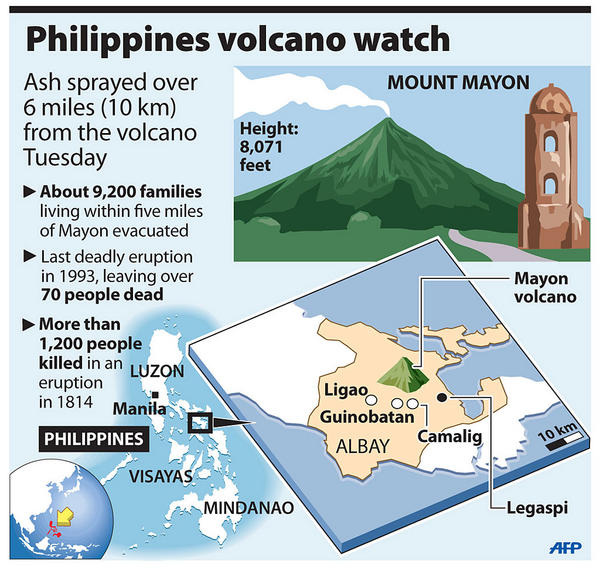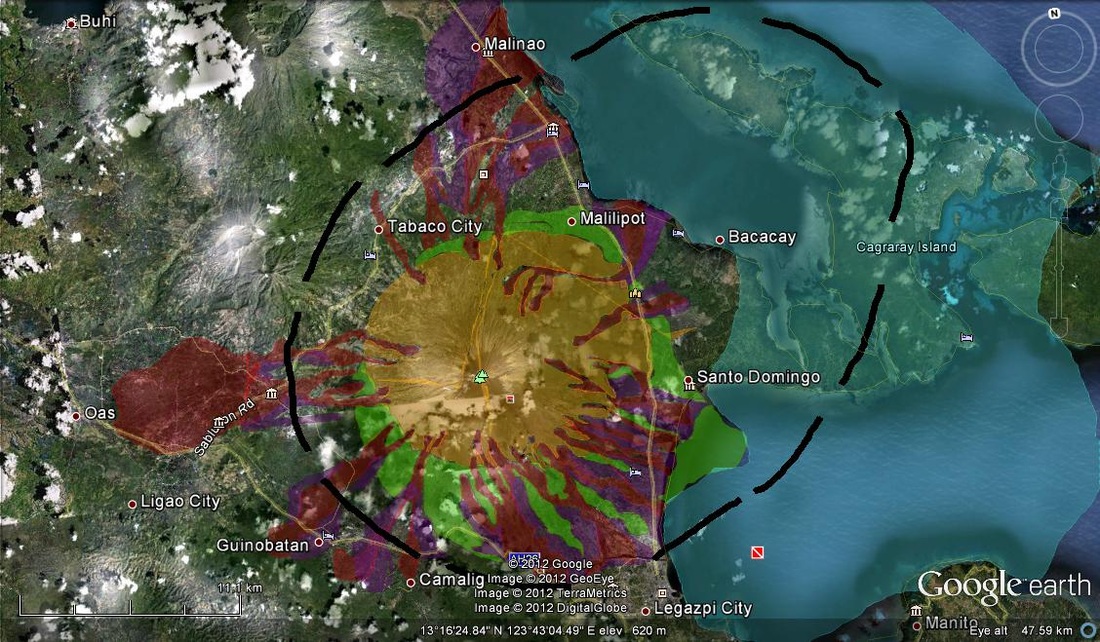Monitoring
|
Signs to Eruptions:
1. Increase in seismicity level (Background: 0-10 volcanic quakes per day) 2. Ground tilt due to magma intrusion. 3. Change in color of steam production from white to gray due to entrained ash 4. Increase in the volume of steam emission 5. Crater glow due to presence of magma at or near the crater. 6. Rumbling sounds due to gas explosions, wall fracturing, landslides VOLCANIC HAZARDS |
Type of Hazards:
1. Airfall tephra 2. Lava flows 3. Pyroclastic flows 4. Lahars Permanent Danger Zone: six (6) km radius from the summit Current Monitoring Methods: 1. Seismic monitoring (number of volcanic quakes and tremors) 2. Ground deformation (precise leveling, electronic tilt, GPS) 3. Visual observations 4. Sulfur dioxide emission rate (by COSPEC) 5. Water well monitoring |



